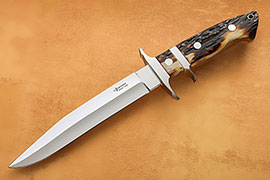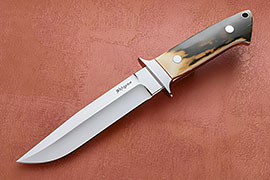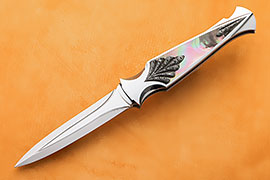Embarking on the journey of knife collecting typically begins in one of two ways. Some novices are drawn to custom knives that visually appeal to them or have a certain allure, purchasing these items as the starting point for their collection. As they continue, they gradually acquire deeper insights into how to curate a more deliberate and cohesive collection. Alternatively, other beginners—often those who are more cautious or academically inclined—prefer to gain a substantial understanding of the field before making their first acquisitions.
Generally, knives that are not old enough to be classified as antiques but hold significant artistic, historical, or aesthetic value are categorized as collectibles. It’s important to note that being a collectible does not necessarily mean the knife is part of a limited edition; many such knives have been in existence for decades and include various types of folding knives, hunting knives, and custom knives, among others.
Many collectors find value in creating a strategic plan for their collection, blending educational pursuits with practical experience to carve out a unique collecting style. This approach not only enhances their appreciation of different knives but also aids in honing their selection skills. Even those who initially resist the idea of a structured approach often find that learning about the historical and cultural significance of custom knives, as well as the technical aspects of collecting, enriches their experience and sharpens their acumen in choosing pieces that resonate with their evolving tastes.
Tips for Starting a Knife Collection
- Research and Education: Learn about different types of knives, their history, and their uses. Understanding the nuances of knife making, materials, and designs will help you make informed decisions.
- Set a Budget: Knife collecting can be an expensive hobby. Establish a budget to ensure you don’t overspend and can focus on acquiring quality pieces over quantity.
- Start with What You Like: Begin with knives that appeal to you personally. Your tastes may evolve over time, but starting with pieces you enjoy will make the process more enjoyable.
- Attend Knife Shows and Auctions: These events are great opportunities to see a wide variety of knives, meet other collectors, and learn from experts.
- Join Knife Collecting Communities: Online forums, social media groups, and local clubs can provide valuable advice, resources, and support from fellow enthusiasts.
- Document Your Collection: Keep records of your acquisitions, including purchase details, provenance, and any unique characteristics. This will help you track your collection and its value over time.
- Speak to Knowledgeable Dealers – So you can avoid purchasing knives that lose value quickly or are difficult to resell. Dealers may also point you to certain knives or artists whose knives have tended to increase in value over time.
- Proper Storage and Maintenance: Invest in proper storage solutions, such as display cases or knife rolls, and regularly maintain your knives to preserve their condition and value.
By following these tips and immersing yourself in the world of custom knife collecting, you can develop a rewarding hobby that offers both aesthetic pleasure and a deep sense of accomplishment.



